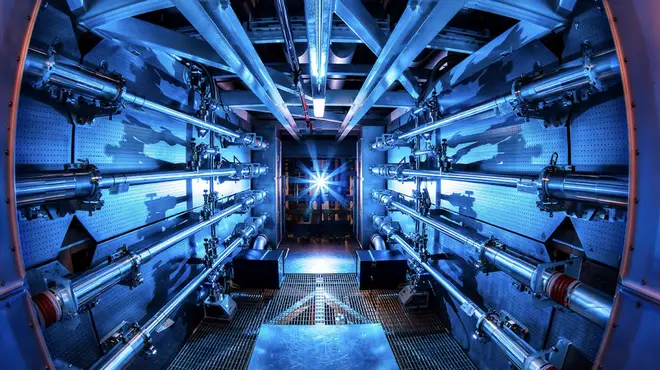
Simon Marks 4pm - 7pm
13 December 2022, 15:25 | Updated: 13 December 2022, 15:32

Scientists have announced a major breakthrough in the race to harness energy from nuclear fusion.
The technology could be a potential source of near-limitless clean energy as the elements needed to fuel the reaction can be found in sea water.
The breakthrough was announced at the Lawrence Livermore National Laboratory in California, one of several sites worldwide where researchers have been trying to develop the technology.
Researchers confirmed a major breakthrough today - producing more energy from a fusion experiment than was put in.
Researchers at the Lawrence Livermore National Laboratory in California said for the first time they had managed to produce more energy in a fusion reaction than was used to ignite it, something called net energy gain.
The achievement will pave the way for advancements to the future of clean power, officials said.
Ms Granholm was appearing alongside Livermore researchers at a news conference in Washington.
"This is a landmark achievement for the researchers and staff at the National Ignition Facility who have dedicated their careers to seeing fusion ignition become a reality, and this milestone will undoubtedly spark even more discovery," Ms Granholm said in a statement.
Experts say there is still a long way to go before it will be available to power homes.
Nuclear fusion has been labelled the ‘holy grail’ of energy production.
The technology has the potential to one day accelerate the planet's shift away from fossil fuels, which are the major contributors to climate change.
Nuclear fusion produces huge amounts of energy, and only small amounts of short-lived radioactive waste.
The process produces no greenhouse gas emissions and therefore does not contribute to climate change.
What is nuclear fusion?
Look up, and it is happening right above you - nuclear fusion reactions power the sun and other stars.
The reaction happens when two light nuclei merge to form a single heavier nucleus.
Because the total mass of that single nucleus is less than the mass of the two original nuclei, the leftover mass is energy that is released in the process, according to the US Department of Energy.
In the case of the sun, its intense heat - millions of degrees Celsius - and the pressure exerted by its gravity, allow atoms that would otherwise repel each other to fuse.
Scientists have long understood how nuclear fusion has worked and have been trying to duplicate the process on Earth as far back as the 1930s.
Current efforts focus on fusing a pair of hydrogen isotopes, deuterium and tritium, according to the Department of Energy, which says that particular combination releases "much more energy than most fusion reactions" and requires less heat to do so.
How valuable would this be?
Daniel Kammen, a professor of energy and society at the University of California at Berkeley, said nuclear fusion offers the possibility of "basically unlimited" fuel if the technology can be made commercially viable. The elements needed are available in sea water.
It is also a process that does not produce the radioactive waste of nuclear fission, Mr Kammen said.
How are scientists trying to do this?
One way scientists have tried to recreate nuclear fusion involves what is called a tokamak - a doughnut-shaped vacuum chamber that uses powerful magnets to turn fuel into a superheated plasma (between 150 million and 300 million degrees Celsius) where fusion may occur.
The Livermore lab uses a different technique, with researchers firing a 192-beam laser at a small capsule filled with deuterium-tritium fuel.
The lab reported that a test in August 2021 produced 1.35 megajoules of fusion energy - about 70% of the energy fired at the target.
The lab said several subsequent experiments showed declining results, but researchers believed they had identified ways to improve the quality of the fuel capsule and the lasers' symmetry.
"The most critical feature of moving fusion from theory to commercial reality is getting more energy out than in," Mr Kammen said.